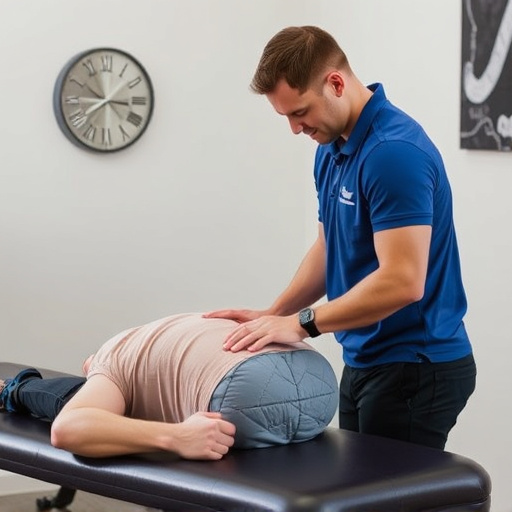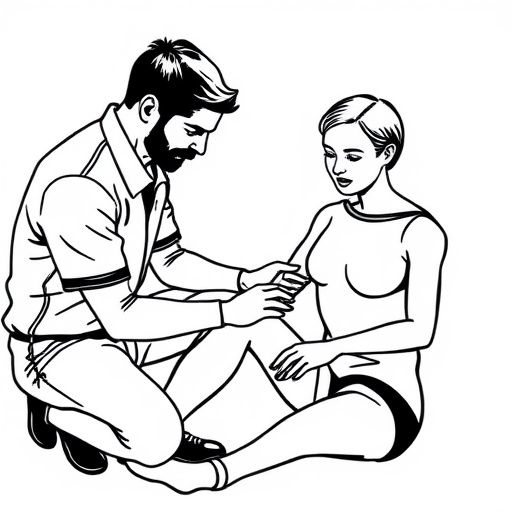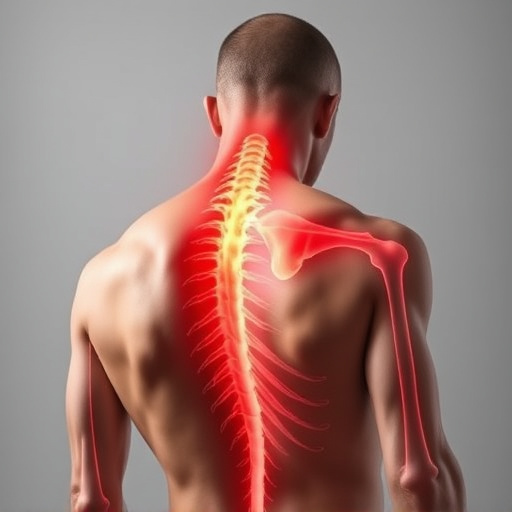Ergonomic injuries, caused by poor posture, workplace activities, or tech overuse, affect the neck, shoulders, and back, leading to strain, sprains, and chronic pain. These injuries are preventable through environmental adjustments (like setting up workstations correctly), improving posture, and targeted exercises. Early intervention focusing on joint health, muscle recovery, and rehabilitation reduces recovery time. Effective treatment includes physical therapy, heat/cold therapy, ergonomic assessments, and adjustments like using ergonomic tools and taking regular breaks. Creating an ergonomic work environment is a proactive step to prevent and alleviate such injuries, with simple adjustments reducing strain and maintaining good posture.
“Experience persistent neck, shoulder, or back pain? You may be suffering from an ergonomic injury, often caused by prolonged exposure to unsafe work environments. This article delves into the impact of such injuries and offers a comprehensive guide to effective treatment strategies. From understanding the root causes to implementing ergonomic modifications, we explore ways to relieve and prevent pain. Discover practical tips to create a healthier, more comfortable workspace and reclaim your well-being.”
- Understanding Ergonomic Injury and its Impact on Neck, Shoulder, and Back
- Effective Treatment Strategies for Relieving and Preventing Ergonomic-related Pain
- Ergnomic Modifications to Create a Safe and Healthy Work Environment
Understanding Ergonomic Injury and its Impact on Neck, Shoulder, and Back

Ergonomic injury, often stemming from prolonged periods in a static position, can significantly impact the neck, shoulders, and back. This type of injury is commonly associated with workplace activities or excessive use of technology, leading to issues like strain, sprains, and even chronic pain. The neck, being highly flexible, is particularly vulnerable to injuries caused by poor posture during sitting or lifting heavy objects. Shoulders, too, endure significant stress from repetitive motions, leading to conditions like rotator cuff tendinitis. Back pain, a prevalent issue in modern times, can result from various ergonomic factors, including improper lifting techniques and desk setups.
Recognizing the impact of ergonomic injuries is crucial as they can hinder daily activities and productivity. Joint pain relief, muscle recovery, and functional rehabilitation are key components of treatment. Ergonomic injury treatment focuses on addressing the root causes to prevent further damage. This may involve adjusting work environments, implementing better posture practices, and utilizing specific exercises targeted at affected joints and muscles. Early intervention and proper management can significantly reduce recovery time and enhance overall well-being.
Effective Treatment Strategies for Relieving and Preventing Ergonomic-related Pain

Ergonomic injury treatment focuses on addressing pain stemming from prolonged periods of awkward posture or repetitive tasks, common in today’s sedentary work environments. Effective treatment strategies for relieving and preventing ergonomic-related pain include a combination of non-invasive approaches. These may involve physical therapy targeting specific muscle groups to improve strength and flexibility, along with targeted exercises designed to restore proper alignment and movement patterns.
Additionally, employing techniques like heat or cold therapy can aid in reducing inflammation and promoting muscle recovery for soft tissue injuries. Ergonomic assessments are crucial in identifying root causes by analyzing work stations and tasks, leading to tailored adjustments that prevent recurring issues. Such adjustments might include modifying workstation setup, incorporating ergonomic tools, or implementing regular breaks to encourage movement and stretch throughout the day.
Ergnomic Modifications to Create a Safe and Healthy Work Environment

Creating an ergonomic work environment is a proactive approach to prevent and alleviate ergonomic injury treatment needs for neck, shoulder, and back pain. Simple modifications can significantly reduce the risk of strain and discomfort. Adjusting your workstation setup is key; ensure your computer monitor is at eye level or slightly below, and your keyboard and mouse are positioned to allow for a neutral wrist position. Consider using an ergonomic keyboard and mouse to support your wrists during prolonged use. Proper chair alignment is also crucial; opt for a chair that provides lumbar support and adjust it so your feet rest flat on the floor.
Additionally, take regular breaks to stretch and move around. The 20-20-20 rule can help reduce eye strain: every 20 minutes, focus on an object 20 feet away for at least 20 seconds. Staying hydrated and maintaining good posture throughout the day will also contribute to headache relief and overall body balance, hastening auto accident recovery and providing lasting neck pain relief.
In conclusion, ergonomic injury treatment is essential for managing and preventing pain in the neck, shoulders, and back. By understanding the impact of improper posture and workplace design, individuals can implement effective strategies to relieve discomfort and create a safer work environment. Through a combination of treatments, modifications, and awareness, folks can avoid the hustle and bustle of chronic pain and embrace a healthier, more productive lifestyle.














